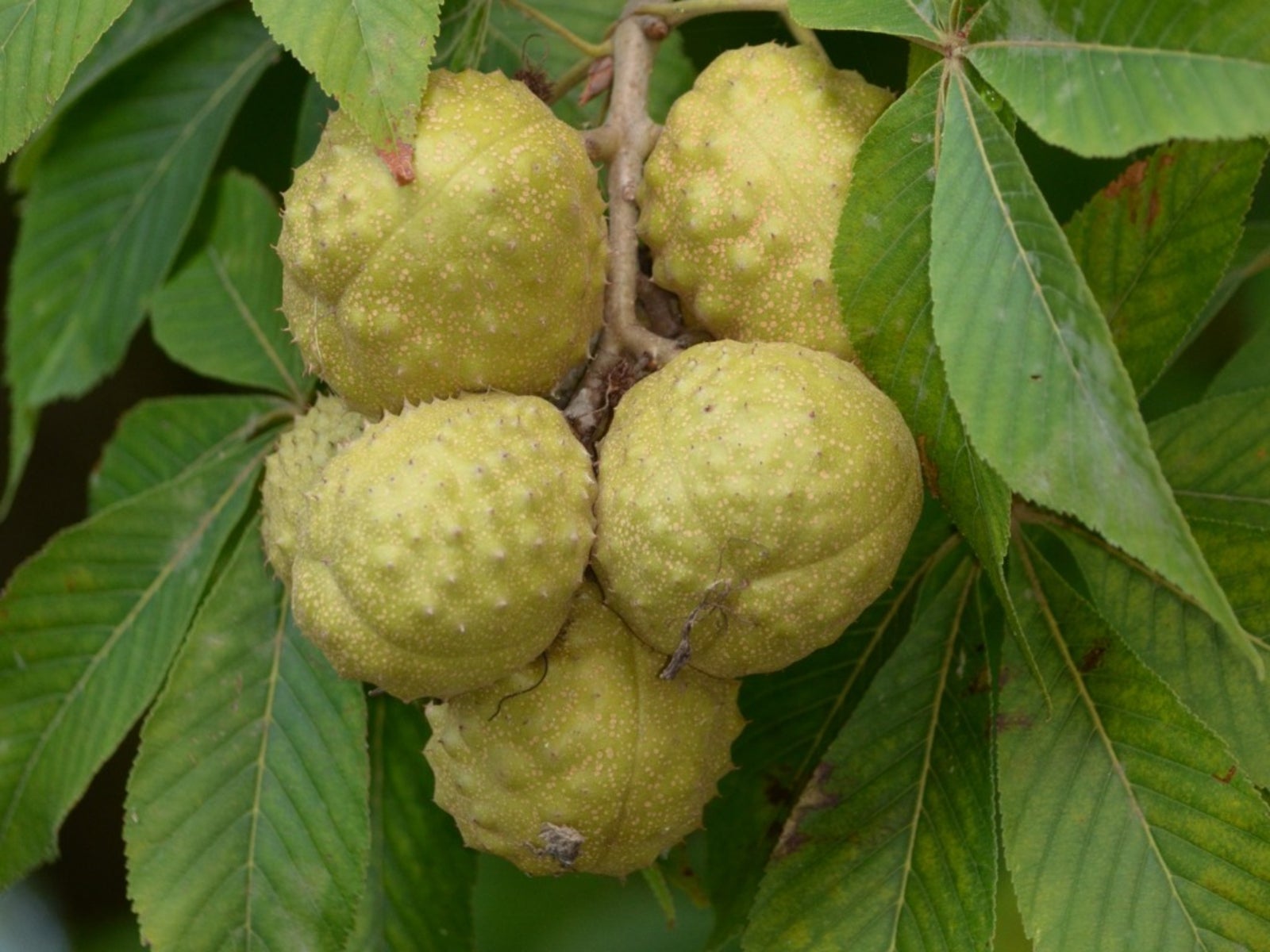Buckeye Tree Planting: Information On Using Buckeye As A Yard Tree


Ohio's state tree and the symbol for Ohio State University's intercollegiate athletics, Ohio buckeye trees (Aesculus glabra) are the best known of the 13 species of buckeyes. Other members of the genus include medium to large trees such as the horse chestnut (A. hippocastanum) and large shrubs like the red buckeye (A. pavia). Read on for information about buckeye tree planting and some interesting buckeye tree facts.
Buckeye Tree Facts
Buckeye leaves are made up of five leaflets that are arranged like spread fingers on a hand. They are bright green when they emerge and darken as they age. The flowers, which are arranged in long panicles, bloom in spring. Green, leathery fruit replace the flowers in summer. Buckeyes are one of the first trees to leaf out in spring, and also the first to drop their foliage in fall. Most of the trees in North America called "chestnuts" are actually horse chestnuts or buckeyes. A fungal blight wiped out most of the true chestnuts between 1900 and 1940 and very few specimens survived. The nuts from buckeyes and horse chestnuts are poisonous to humans.
How to Plant a Buckeye Tree
Plant buckeye trees in spring or fall. They grow well in full sun or partial shade and adapt to most any soil, but they don't like an extremely dry environment. Dig the hole deep enough to accommodate the root ball and at least twice as wide. When you set the tree in the hole, lay a yardstick, or flat tool handle across the hole to make sure the soil line on the tree is even with the surrounding soil. Trees that are buried too deep are susceptible to rot. Backfill the hole with unamended soil. There is no need to fertilize or add soil amendments until the following spring. Water deeply and in the absence of rain, following up with weekly waterings until the tree is established and beginning to grow. A 2 to 3 inch (5-7.5 cm.) layer of mulch around the tree will help keep the soil evenly moist. Pull the mulch back a few inches (5 cm.) from the trunk to discourage rot. The main reason you don't see more buckeyes as a yard tree is the litter they create. From dead flowers to leaves to the leathery and sometimes spiny fruit, it seems that something is always falling from the trees. Most property owners prefer to grow buckeyes in woodland settings and out-of-the-way areas.
Gardening tips, videos, info and more delivered right to your inbox!
Sign up for the Gardening Know How newsletter today and receive a free copy of our e-book "How to Grow Delicious Tomatoes".

Jackie Carroll has written over 500 articles for Gardening Know How on a wide range of topics.
-
 Looking For Plants To Give You The Soft And Fuzzies? Try These 5 Fuzzy Leaf Plant Options
Looking For Plants To Give You The Soft And Fuzzies? Try These 5 Fuzzy Leaf Plant OptionsLovers of texture, drama, silver foliage and tactile plants will adore these special sensory garden additions. These fuzzy leaf plant options will leave you all aglow
By Susan Albert
-
 Get Ready For A Summer Of Hummers! Grow These Full Sun Hummingbird Plants and Flowers
Get Ready For A Summer Of Hummers! Grow These Full Sun Hummingbird Plants and FlowersIf you’re lucky enough to enjoy a sunny backyard, make sure you are maxing out on your pollinator opportunities and grow these full sun hummingbird plants and flowers
By Tonya Barnett
-
 California Buckeye Care: How To Plant A California Buckeye Tree
California Buckeye Care: How To Plant A California Buckeye TreeCalifornia buckeyes provide habitats for native wildlife and pollinators. With knowledge of a few California buckeye facts, homeowners can make a more informed decision on whether or not this tree is a good choice for them. Learn more about growing this tree here.
By Tonya Barnett
-
 Red Buckeye Trees: Tips On Caring For Dwarf Red Buckeyes
Red Buckeye Trees: Tips On Caring For Dwarf Red BuckeyesDwarf red buckeye trees are really more like shrubs, but no matter how you describe it, this is a nice, compact form of the buckeye tree that produces the same interesting leaves and upright spikes of spring flowers. Learn more in this article.
By Mary Ellen Ellis
-
 Red Buckeye Tree Growth: Tips On Planting A Red Buckeye Tree
Red Buckeye Tree Growth: Tips On Planting A Red Buckeye TreeRed buckeye trees are relatively easy to care for, medium-sized trees or shrubs that produce showy red flowers in the spring. They are a great choice for large, easy decoration along borders. Learn more about red buckeye tree care in this article.
By Liz Baessler